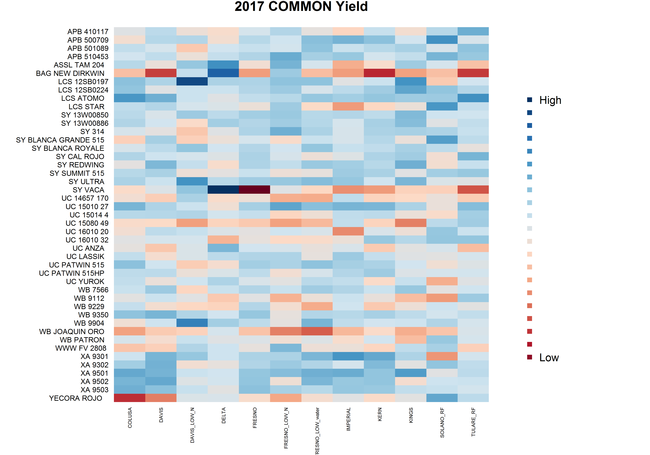Cooler temperatures are indicative that mid-November is approaching fast. Results from UC's variety trials from the 2016-2017 season are now available here.
Growers are encouraged to try out the new variety selection tool developed by the UC Agronomy RIC. It allows users to narrow in on specific varieties of wheat, barley, or durum based on 3-year averages of regional performance, yield, stripe rust resistance, and protein. A how-to video is also available to highlight some of the tool's features.
The heatmap (below) is another useful feature that allows growers a quick comparative overview of variety performance based on site for a given year. High-yielding varieties are indicated by shades of blue, lower yields are indicated by shades of red. Growers can use this information to get a general idea of variety performance in their region.
Keep in mind that last year was out of the ordinary in terms of weather. Some of the trial results reflect the abnormal conditions. The Delta site was subjected to standing water due to heavy rainfall early in the season and as a result late-maturing varieties (SY VACA, for example) performed much better in those conditions. For a more-informed final decision, consider using 3-year trial data to confirm whether the data from the heat map are consistent when factoring in rainfall conditions and disease pressures that have varied significantly in recent years. 3-year data for barley and tritcale are also available. Disease incidence and resistance to BYDV, stripe rust, leaf rust, septoria is also available for individual varieties of wheat, barley, or triticale.
Please feel free to contact your local advisor with any questions you have regarding the trials.
